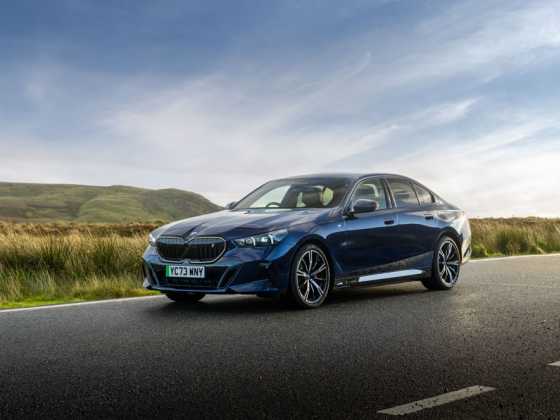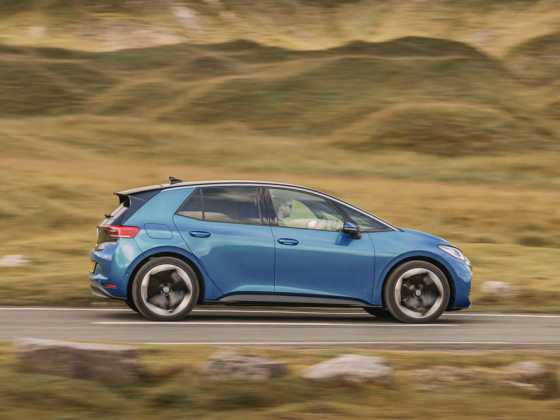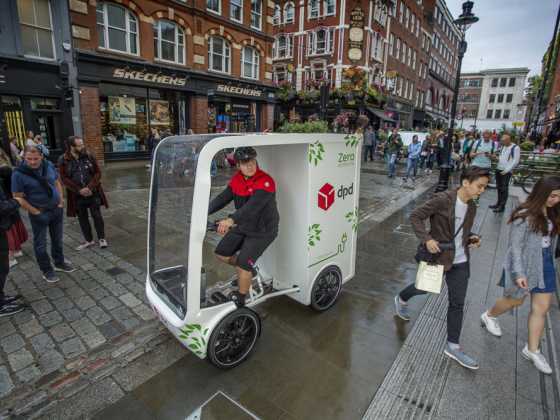Moving logistics onto water

Cross River Partnership and Net Zero Marine have launched Alb-E, a retrofitted electric workboat, as part of a project which aims to shift light freight deliveries away from congested roads and onto the Thames
Retrofitting vessels can be complex, time-consuming, and expensive to implement. Still, once these challenges are overcome, there are short- and long-term benefits, such as reduced operating costs, getting ahead of tightening legislation, environmental benefits and improved public perception.
In November 2023, Cross River Partnership and Net Zero Marine launched Alb-E, London’s first electric workboat, which had its diesel-powered engine swapped with an electric motor and batteries over the summer.
The project came about through Cross River Partnership’s Clean Air Logistics for London programme funded by the Department for Environment, Food & Rural Affairs’ Air Quality Grant. The Grant funds eligible local authorities to improve air quality and meet their obligations under the 1995 Environment Act.
The programme, which ended earlier this year, aimed to shift more light freight deliveries onto the Thames away from London’s congested roads, supported by zero- or low-emission transport for the trip’s final leg, simultaneously reducing congestion and air pollution.
“We also wanted to demonstrate that retrofitting vessels can be a viable, economical, and effective way to reduce air pollution on the river, especially since we want to see it used for more transport,” said Cross River Partnership project manager, Sefinat Otaru.
Cross River Partnership engaged with vessel operators and industry experts to identify potential candidates that could complete the conversion to a greener, cleaner vessel in less than a year. “We were limited to operators who already had a retrofit underway or who proposed a relatively simple conversion with immediate access to required resources, including parts and labour,” said Otaru.
The organisation settled on working with Net Zero Marine, a company delivering renewable energy and shore power solutions. Net Zero Marine had access to charging infrastructure along the Thames, and it owned a diesel workboat, Albert, which they used to shuttle small crews and equipment along the river. Electrification was a sensible choice.
Assessing emissions
Before work on the vessel could begin, Cross River Partnership brought in Emissions Analytics to analyse Albert’s exhaust emissions, quantifying just how much pollution the vessel produced, which would be removed by the workboat going electric.
Emissions Analytics carried out the work while the vessel was dry-docked at Eel Pie Island in Twickenham, London. The monitoring results, used in a case study produced by Cross River Partnership, showed that Albert put out more than 2.3 tonnes of carbon dioxide per year, in addition to significant amounts of nitrogen oxides and particulate matter.
Once the monitoring was complete, TMS Engineering’s crew removed Albert’s Perkins Sabre diesel engine and replaced it with an ePropulsion’s H-60 motor and 14-pack battery system. This part of the project took less than two months to complete, and Albert was renamed Alb-E.
“Despite a tight timeframe of just six weeks, our dedicated and passionate team met the challenge, working relentlessly to bring to life the vision of our partner, Net Zero Marine,” said Jonathan Angus, director of TMS Engineering.
Angus went on to say: “Our team designed the electrical package to ensure a speed and range compatible with the needs of a workboat operating on the Thames. Alb-E sets a new benchmark with its capability to traverse the full length of the tidal Thames on a single charge.”
Saving on refuelling costs
Alb-E can cover 75 nautical miles on one charge. In September 2023, a single charge cost £56.68, a huge longer-term saving in comparison to the £246 required to fill a diesel tank to cover the same distance. Consequently, Net Zero Marine is looking at savings of more than 75 per cent in refuelling costs alone.
However, the project cost approximately £137,000, including parts and labour and was paid for by Clean Air Logistics for London and Thames Marine Services. Initial high investment costs are a challenge, especially for smaller operators on the river, many of whom are still recovering from setbacks to their business during the COVID-19 pandemic.
Furthermore, retrofitting is often not a straightforward process. Engineers can discover structural problems after they take the vessel apart, there are delays waiting for new parts, or other jobs are waiting their turn. Furthermore, three years after Brexit, there is still a need for more qualified mechanics, which further slows down the job.
Vessel owners are aware of these potential setbacks and are reluctant to green their vessels without funding or financial incentives. Once an owner upgrades their vessel, getting a license to operate it can take time.
In Alb-E’s case, the Port of London Authority and certifying authority, MECAL Ltd, had to ensure the vessel was safe for crew and other river users following its electrification. Given that there are few vessel electrification projects in London to use as a benchmark, Alb-E’s certification process took several months to complete.
The process can be quicker for popular solutions such as selective catalytic reduction, a technology that can significantly reduce nitrogen oxide emissions. Operators also look to alternative fuels such as biodiesel to cut down their emissions. Some fuels require little or no modifications to the existing vessel, so it is an attractive option to operators looking for a less costly alternative, even if it is less efficient than larger-scale work.
Greening the waterways
There are also no binding legal requirements to reduce emissions on waterways in the UK. As of this writing, roughly 500 of the 7,278 boats registered to operate on the Thames in 2023 are powered by electricity. This is a much smaller scale than in Amsterdam, for example, where all vessels in the city centre must be hybrid or fully electric by 2025, and currently receive a 70 per cent discount on inland harbour dues.
“Alb-E was able to overcome hurdles we have seen in previous vessel retrofit exercises, so we’re very pleased with how the project has gone. The more retrofit examples there are on the river, the more operators can see that the difficulties retrofitting boats are not insurmountable,” said Otaru. “We’re especially pleased to show how much emissions pollution has been removed by making Alb-E electric.”
Although vessel operations on the Thames account for approximately one per cent of the Capital’s emissions, that number will likely increase as more freight is moved by the river rather than by road, and the overall use of the river increases.
Smarter logistics
Cross River Partnership continues its work greening freight in its Smarter Greener Logistics programme, also funded by the Department for Environment, Food & Rural Affairs. The programme has more than twenty partners from the public and private sectors, as well as strategic agencies such as Transport for London and the Port of London Authority.
Over the next year, they will set up micro logistics hubs, install virtual loading bays, increase the availability and use of parcel lockers, encourage the use of shared electric vehicles, pilot more cargo bike and walking freight deliveries, and, of course, find new ways to use the river to move light freight.
Although the organisation is not carrying out retrofits as part of the programme, it will continue to promote the lessons gained from retrofitting Alb-E to relevant stakeholders.
“The retrofit of the Alb-E shows how important organisations such as Cross River Partnership are for the river Thames. The marine sector has taken a step forward here, and we hope that many workboats will follow in Alb-E’s footsteps,” said Miles Cole, managing director, Net Zero Marine Services.”






